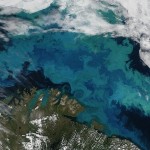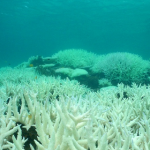Mystery Metal Balls Found on Ocean Floors
Strange Manganese metal balls, also referred to as nodules, have been found by the millions scattered all over the floor of every ocean on Earth.
Discovered in 1876, it has long time baffled scientists to their origins and creation, but now a team of German scientists may have the answer to this Earth science mystery. (See Video Below)
Polymetallic nodules, also called manganese nodules, are rock concretions on the sea bottom formed of concentric layers of iron and manganese hydroxides around a core. The core may be microscopically small and is sometimes completely transformed into manganese minerals by crystallization. When visible to the naked eye, it can be a small test (shell) of a microfossil (radiolarian or foraminifer), a phosphatized shark tooth, basalt debris or even fragments of earlier nodules.
Nodules vary in size from tiny particles visible only under a microscope to large pellets more than 20 centimetres (8 in) across. However, most nodules are between 5 and 10 cm (2 and 4 in) in diameter, about the size of potatoes. Their surface is generally smooth, sometimes rough, mammilated (knobby) or otherwise irregular. The bottom, buried in sediment, is generally rougher than the top.







